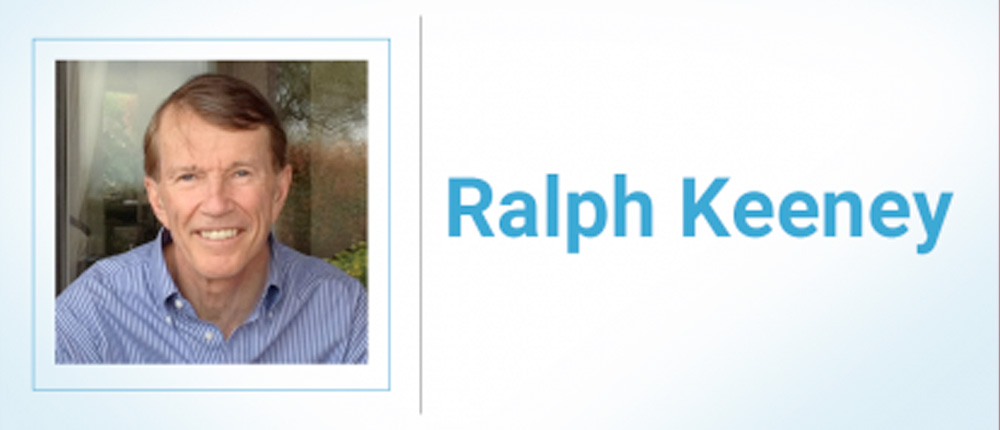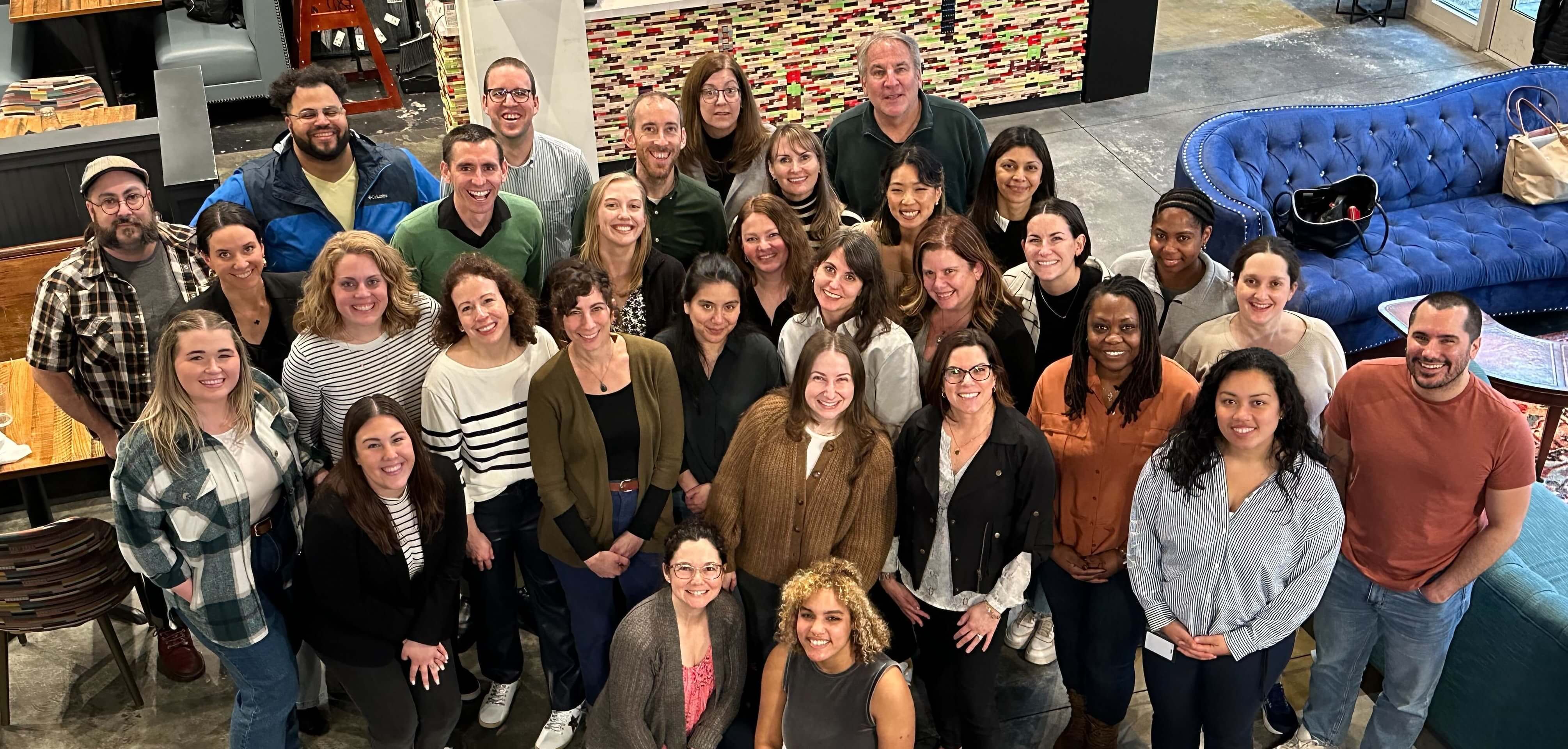Your Decisions, Llama-Powered Cement Mixers, and the Lever to Ultimate Freedom

From dealing with decision problems to creating decision opportunities
Many of us view decision making processes as something we engage in just to solve a problem so we can return our world to the status quo as rapidly as possible. It can be a stressful, negative, and unsatisfying experience.
However, Ralph Keeney sees decision making completely differently. While we do sometimes have to deal with “decision problems,” Keeney urges us in his new book Give Yourself a Nudge: Helping Smart People Make Smarter Personal and Business Decisions to also make the effort to seek out “decision opportunities”— ways to proactively improve something we value. As Keeney puts it, “A key idea of this book is that you can greatly benefit from recognizing and pursuing more decision opportunities. Decision opportunities are not problems to be solved, but opportunities to pursue.”
Keeney is on a mission to rescue decision making from the fate of being simply a tool to fight fires and resolve crises. He wants us to see it as a lever to continually improve our lives in ways that we care about. Keeney states his point boldly: “Your decisions are what empowers you!’”
Currently Professor Emeritus at both Duke University and the University of Southern California, Keeney is a key figure in the field of Decision Analysis. Now based in San Francisco, he helps social, business, and governmental organizations navigate complex policy decisions. His latest book outlines his refreshing approach to decision making for individuals, and stresses above all firmly placing our values at the heart of our decisions.
In a recent conversation with the Alliance, Keeney shared his insights on the decision making principles most helpful for people to use in everyday life—no number-crunching necessary.
The Value-Focused Decision Maker
Keeney suggests there are three ingrained habits that let many of us down when we make important decisions:
- We don’t consciously know all that we want to achieve.
- We don’t spend time generating better alternatives than those readily available.
- We don’t create opportunities to improve things, we just deal with problems.
To address these shortcomings, Keeney urges every one of us to become a ‘Value-Focused Decision Maker”—someone who places their values at the heart of their decision making. Keeney outlines the overall process as follows:
- Defining and structuring the decision that we should face (front-end): This involves clearly stating the decision we face, identifying our values, and creating alternatives.
- Evaluating our alternatives and making our decision (back-end): This involves considering the consequences of each alternative, weighing the importance of the pros and cons of each alternative, and using this information and insight to select an alternative.
Keeney argues that it is very important, and not difficult, to improve the front-end of the process. If you want to generate “better” alternatives to pick from, you have to know what “better” means. As Keeney puts it, “How could you productively think about achieving what you want without knowing what you want?” To know what you want from the decision, you have to identify your values.
The concept of values may seem quite abstract, but Keeney provides a concise way of thinking about them: our values for a decision specify all that we care about in making the decision. Even with this definition to guide us, it can still be hard to clarify our values for a specific decision. He helpfully suggests four steps to simplify this process:
- The wish list: write down all potential values for our decision that readily come to mind, and then try to double the list.
- Value stimulation techniques: articulate our emotions and feelings about the decision, view the situation from different perspectives, and consider what we might regret.
- Ask others: consult with people who know us well and people who we respect.
- Use previously identified values: ask why we care about these values to trigger the identification of additional values.
From The Alliance’s own work of bringing decision making into the classroom, it’s clear that young people can find it challenging to identify what they personally want from a decision, rather than simply adopting the implied values of a parent or teacher. Keeney however, is quite clear on this point, and shares some enlightening advice helpful to young and old alike. When it comes to deciding what you care about regarding a decision, he reminds us, “You are the world’s expert on your values.”
Nightmare Situations & Phantom Negotiations
When Keeney was given an assignment in college to design an electric shoe-polisher, he had no interest in doing it. “I decided it didn’t make a lot of sense for me at that time,” he said. In a conversation with his teacher, he proposed designing a llama-powered cement-mixer, which eventually made its way to the Andes mountains. As Keeney describes it, “It wasn’t like I was unwilling to do work—I probably did more! But it was more useful and a lot more fun.”
Seeking “decision opportunities” can be incredibly empowering, but we all face scenarios when other people have the authority for a decision—in this case, Keeney’s teacher. Decisions taken by these authority figures can have an undesirable impact on us, forcing us into what Keeney terms “nightmare situations.” Fortunately, he also offers a practical solution. The first step is to secure a better understanding of the authorized decision-maker’s values. You then use these values to create an entirely new alternative, and enter into what Keeney calls “phantom negotiation,” which involves creating and proposing an alternative that can’t be refused. As Keeney describes it, “you need to create an alternative that has higher values for both you and the authorized decision maker than the current status quo.”
Phantom negotiation is what Keeney entered into with his college teacher. The teacher ended up with a more interesting project to grade, and Keeney ended up scooping up almost the entire class design budget to put Peruvian llamas to work mixing cement in the Andes Mountains. His was clearly an offer that couldn’t be refused.
Implications and Insights
Keeney also has some powerful insights to share around a couple of contentious topics in decision making: optimization and objectivity.
Optimizing a decision means choosing the best alternative for that decision, which seems like a reasonable intention. However, Keeney states, “I think it is rational and advisable not to optimize most of your decisions.” While he clearly sees decision making itself as an enjoyable process, he underscores that the real value of decision making is in getting on with living the life that has been improved by our decisions. If the gains you would make by further deliberation are outweighed by time lost from experiencing our upgraded life, Keeney advises choosing what you currently think is the best alternative and using the time to enjoy your life. Of course, some decisions will have a greater impact on our quality of life than others. Keeney notes, “trying to optimize each individual decision makes no sense, whereas those decisions that will significantly impact your life merit more time and attention.”
Keeney also highlights a critical implication of value-focused decision making, that it is subjective, since it rests on what we ourselves value. “There is no universally correct alternative for any real decision problem,” Keeney argues. “For your decisions, your values set the standard that matters and there is no reason for your values to be the same as those of other individuals.” While Keeney encourages us to let go of the idea of objective decision making, he also provides a means to distinguish between good and bad decisions. Keeney proposes that a good decision is one that is logically consistent with “your values, the alternatives you have identified, and the information that you had at the time of the decision.”
Finally, Keeney advises allocating considerably more of our decision-making time to generating better alternatives. He points out, “Your chosen alternative can be no better than the best of the alternatives that you consider.”
Becoming A Value-Focused Decision Maker
Ultimately, Keeney suggests that value-focused decision-makers think differently from others about how decisions can influence the quality of their lives. “They actively and proactively use specific value-focused concepts and practical procedures to nudge themselves to make better decisions,” Keeney reminds us. These four central concepts are as follows:
- Put values at the heart of the decision-making process.
- Create better alternatives, rather than just accepting the obvious ones (allocating sufficient effort to do so).
- Use phantom negotiations for better outcomes when an authority figure’s decision impacts on them (creating win-wins).
- Generate “decision opportunities” to improve your life, rather than just solving decision problems.
Keeney’s final insight of the conversation summed up his philosophy about both decision making and life more broadly: “Fortunately, I recognized my goal in life when I was young: I wanted to be free. The only control that I have is my decision making. That’s my lever to let me live the life I want to live.”
______________
Keeney’s new book “Give Yourself a Nudge: Helping Smart People Make Smarter Personal and Business Decisions” is published by Cambridge University Press.

